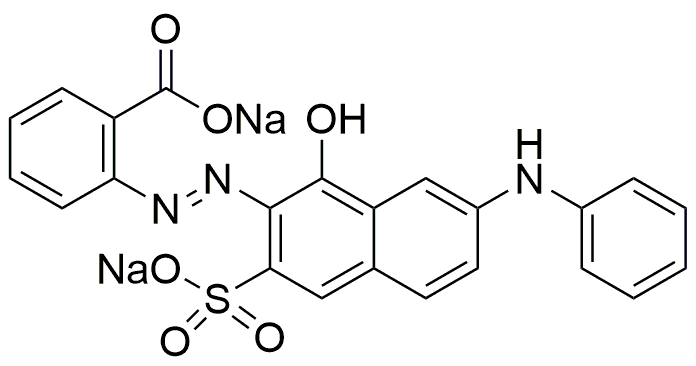Acid anthracene brown PG is widely utilized in research focused on:
- Dyes and Pigments: This compound serves as a coloring agent in textiles and paper industries, providing vibrant hues and excellent lightfastness compared to other dyes.
- Biological Staining: In microbiology and histology, it is used for staining tissues and cells, allowing researchers to visualize structures under a microscope with clarity.
- Environmental Monitoring: It plays a role in assessing water quality by detecting contaminants, helping industries comply with environmental regulations.
- Analytical Chemistry: Acid anthracene brown PG is employed in various analytical techniques, such as chromatography, to separate and identify compounds in complex mixtures.
- Cosmetic Formulations: The compound is also found in some cosmetic products, providing color while being stable and safe for skin application, making it a preferred choice over other synthetic dyes.
General Information
Properties
Safety and Regulations
Applications
Acid anthracene brown PG is widely utilized in research focused on:
- Dyes and Pigments: This compound serves as a coloring agent in textiles and paper industries, providing vibrant hues and excellent lightfastness compared to other dyes.
- Biological Staining: In microbiology and histology, it is used for staining tissues and cells, allowing researchers to visualize structures under a microscope with clarity.
- Environmental Monitoring: It plays a role in assessing water quality by detecting contaminants, helping industries comply with environmental regulations.
- Analytical Chemistry: Acid anthracene brown PG is employed in various analytical techniques, such as chromatography, to separate and identify compounds in complex mixtures.
- Cosmetic Formulations: The compound is also found in some cosmetic products, providing color while being stable and safe for skin application, making it a preferred choice over other synthetic dyes.
Documents
Safety Data Sheets (SDS)
The SDS provides comprehensive safety information on handling, storage, and disposal of the product.
Product Specification (PS)
The PS provides a comprehensive breakdown of the product’s properties, including chemical composition, physical state, purity, and storage requirements. It also details acceptable quality ranges and the product's intended applications.
Certificates of Analysis (COA)
Search for Certificates of Analysis (COA) by entering the products Lot Number. Lot and Batch Numbers can be found on a product’s label following the words ‘Lot’ or ‘Batch’.
*Catalog Number
*Lot Number
Certificates Of Origin (COO)
This COO confirms the country where the product was manufactured, and also details the materials and components used in it and whether it is derived from natural, synthetic, or other specific sources. This certificate may be required for customs, trade, and regulatory compliance.
*Catalog Number
*Lot Number
Safety Data Sheets (SDS)
The SDS provides comprehensive safety information on handling, storage, and disposal of the product.
DownloadProduct Specification (PS)
The PS provides a comprehensive breakdown of the product’s properties, including chemical composition, physical state, purity, and storage requirements. It also details acceptable quality ranges and the product's intended applications.
DownloadCertificates of Analysis (COA)
Search for Certificates of Analysis (COA) by entering the products Lot Number. Lot and Batch Numbers can be found on a product’s label following the words ‘Lot’ or ‘Batch’.
*Catalog Number
*Lot Number
Certificates Of Origin (COO)
This COO confirms the country where the product was manufactured, and also details the materials and components used in it and whether it is derived from natural, synthetic, or other specific sources. This certificate may be required for customs, trade, and regulatory compliance.


